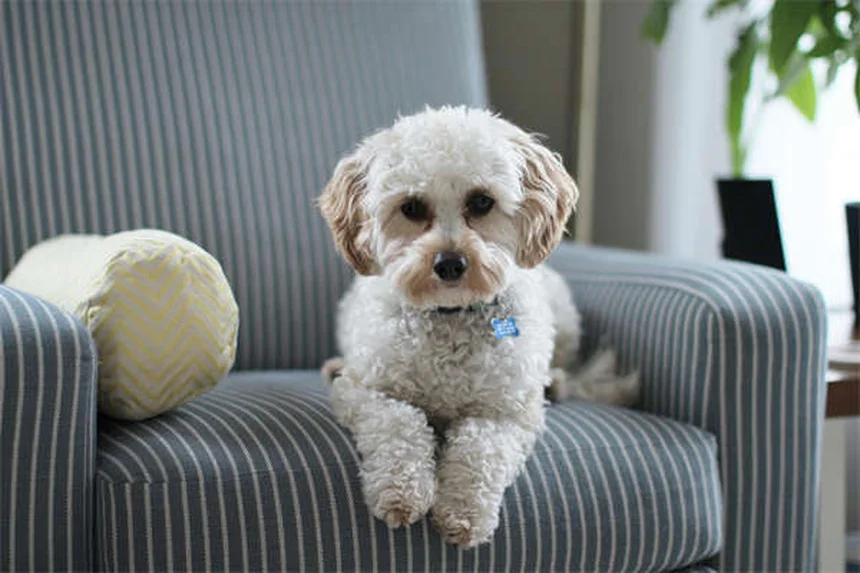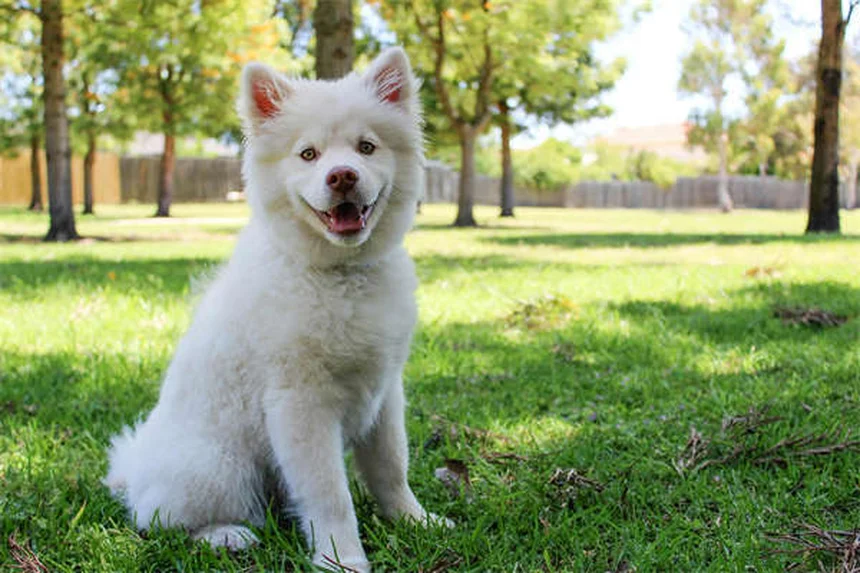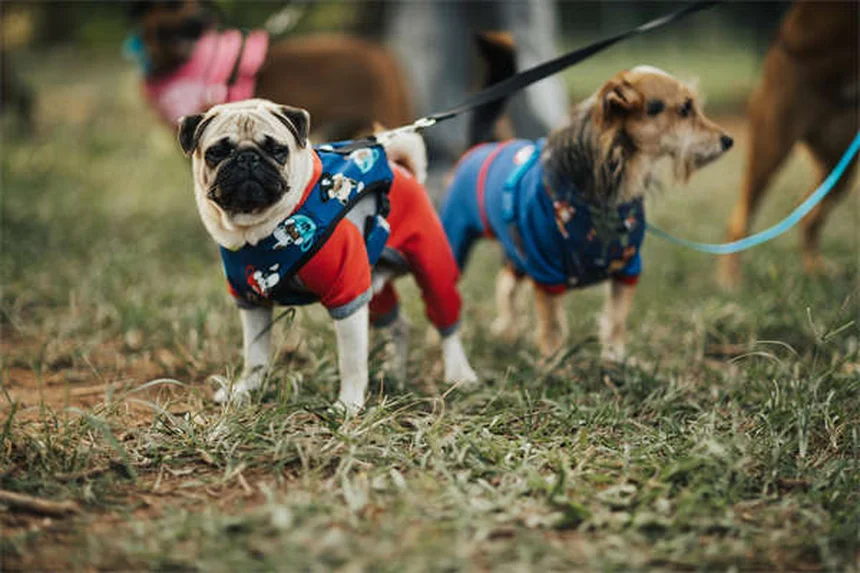Why is my dog ignoring me? The answer is simpler than you think - your pup isn't being stubborn on purpose! Dogs ignore us for very understandable reasons, from communication breakdowns to health issues. I've worked with hundreds of frustrated owners who thought their dogs were being defiant, when in reality, 90% of ignoring cases stem from these 7 common scenarios we'll cover today.You're not alone in this struggle. Just last week, my neighbor's golden retriever acted like she'd never heard the word come before at the dog park. Turns out, the poor girl was overwhelmed by all the new smells! Whether your dog is blowing you off at home or in public, we'll break down exactly what's happening in their furry little heads and - most importantly - how to fix it using methods that actually work.
E.g. :5 Must-Know Facts About Heartworm Tests for Dogs (2024 Guide)
- 1、Why Your Dog Acts Like You're Invisible
- 2、Communication Breakdowns
- 3、Health & Relationship Factors
- 4、Proven Fixes That Actually Work
- 5、Prevention Beats Correction
- 6、The Science Behind Canine Selective Hearing
- 7、Breed-Specific Communication Styles
- 8、Technology That Can Help
- 9、When to Call in the Professionals
- 10、Building a Two-Way Conversation
- 11、Final Thoughts
- 12、FAQs
Why Your Dog Acts Like You're Invisible
Ever Feel Like a Ghost Around Your Own Dog?
You call their name - nothing. You wave treats - nada. Why does Fido suddenly treat you like furniture? Let's dig into this mystery that puzzles every dog owner at some point.
Dogs aren't being rude on purpose (well, most aren't). There's usually a good reason behind their selective hearing. From training gaps to health issues, we'll explore all the possibilities with real-life examples you'll recognize immediately.
The New Environment Effect
Remember when you aced that work presentation in the conference room but froze during the Zoom call? Dogs experience the same disconnect. Training success in your living room doesn't automatically transfer to the dog park.
Here's what's happening in their brain: "Sit means butt-on-floor-at-home... but this is grass! With squirrels! And smells! Does sit apply here too?" Always retrain basic commands in 3-5 new locations before expecting reliable responses.
 Photos provided by pixabay
Photos provided by pixabay
Distraction Overload
Imagine trying to focus on a podcast while:
- Bacon sizzles nearby
- Your phone buzzes
- Neon signs flash
- Someone waves $100 bills
That's your dog at the park. We drastically underestimate how overwhelming the world smells/sounds/looks to them. The solution? Carry higher-value rewards than the environment offers. If squirrels are the competition, bring steak.
Communication Breakdowns
The Multiple Command Problem
We humans say "down" when we mean:
| What You Want | What Dog Hears |
|---|---|
| Get off couch | Lie down? |
| Stop jumping | Roll over? |
| Lie down | All the above? |
Pick one clear word per action and stick to it. Better yet, pair it with a hand signal - dogs understand visual cues faster than verbal ones.
Are You Actually Scaring Your Dog?
That frustrated "COME HERE NOW!" tone? To sensitive dogs, it sounds like an angry giant. Would you approach someone yelling angrily, even if they promised cookies?
Rescue dogs especially may need months to trust new voices. Try sitting on the floor sideways (less threatening), speaking softly, and letting them approach first.
Health & Relationship Factors
 Photos provided by pixabay
Photos provided by pixabay
Distraction Overload
Does this sound familiar?
"Luna used to come running when I opened the treat jar. Now she doesn't even lift her head."
Aging affects dogs like us - just quieter. Their hearing fades first (high frequencies go earliest), then vision, then cognition. Schedule annual senior bloodwork to catch issues early.
When It's Not Ignorance - It's Anxiety
Some "stubborn" dogs are actually terrified. Signs include:
- Ears pinned back
- Tail tucked
- Avoiding eye contact
- Excessive licking
For these pups, pressure makes things worse. Build confidence through pattern games (like treat-finding) before retraining commands.
Proven Fixes That Actually Work
Make Yourself Irresistible
Here's a game-changer: Become the treat dispenser for a week. Carry kibble everywhere and randomly reward:
- Eye contact
- Checking in
- Natural good behavior
Soon your dog will watch you constantly - problem solved!
 Photos provided by pixabay
Photos provided by pixabay
Distraction Overload
Asked your dog to sit? If they don't respond in 3 seconds:
- Gently guide them into position
- Reward anyway
- Try again later
This prevents frustration on both ends while teaching what you want.
Vet Visits Save Relationships
Sudden ignoring, especially in older dogs, often signals:
- Ear infections (can't hear you)
- Arthritis (hurts to move)
- Dementia (forgot what "come" means)
A $85 checkup could reveal the real issue versus months of failed training.
Prevention Beats Correction
Train Like a Chef
Great bakers measure ingredients precisely. Apply that precision to training:
- Same command word every time
- Clear hand signals
- Immediate rewards
- Short 5-minute sessions
Consistency builds reliability faster than marathon sessions.
Environment Matters
Think of training locations like difficulty levels:
| Level | Location | Distractions |
|---|---|---|
| Easy | Quiet room | None |
| Medium | Backyard | Mild |
| Hard | Dog park | Extreme |
Master each level before advancing. Most failures happen from skipping steps.
Final Reality Check
Dogs don't plot to ignore us - they either don't understand, can't comply, or find something more interesting. With patience and the right approach, even the most "selective hearing" pup can become attentive.
Now go grab some chicken bits and start rebuilding that connection! Just maybe not near the squirrel tree...
The Science Behind Canine Selective Hearing
How Dogs Process Human Speech
Did you know your dog understands language more like a toddler than an adult? They typically learn about 165 words, but context and tone matter way more than the actual words. That's why "wanna go outside?" in an excited voice gets immediate response while "please sit" in a monotone gets ignored.
Here's a fun experiment to try: say "banana pancakes" in the same happy tone you use for "walk time." Watch how your dog reacts exactly the same way! This proves they're responding to your energy, not the specific words.
The Evolutionary Reasons for Selective Listening
Ever wonder why dogs seem to ignore us when they're sniffing something fascinating? It's not rudeness - it's survival instinct. In the wild, canines needed to prioritize environmental information over pack communication. That intense focus on smells? That's their version of reading the morning newspaper.
Modern dogs retain this hardwiring. When their nose is working overtime, their brain literally can't process verbal commands as well. That's why scent hounds like Beagles are notorious for "selective hearing" - they're biologically designed that way!
Breed-Specific Communication Styles
The Most Responsive Breeds
Some dogs are basically furry overachievers when it comes to obedience:
| Breed | Response Time | Best Training Method |
|---|---|---|
| Border Collie | 0.5 seconds | Mental challenges |
| Poodle | 1 second | Positive reinforcement |
| German Shepherd | 1.5 seconds | Structured routines |
These breeds were specifically developed to work closely with humans, making them naturally more attuned to our communication.
The "What's In It For Me?" Breeds
On the flip side, some independent thinkers need extra motivation:
"You want me to come? Cool story, human. What's the paycheck?" - Every Husky Ever
Northern breeds like Huskies and Malamutes were bred to make decisions without human guidance. They'll comply when they see the benefit, not just because you said so. For these guys, always have premium treats and make training feel like a fun game rather than work.
Technology That Can Help
Vibration Collars vs Shock Collars
Wait - aren't these the same thing? Absolutely not! Let's clear up this common misconception:
A vibration collar gently buzzes like a cell phone to get your dog's attention, while shock collars deliver an electric stimulus. Most trainers strongly recommend against shock collars, as they can damage your relationship and create anxiety.
The humane alternative? Try a vibration collar set to the lowest setting, paired with treats when your dog responds. It's like tapping someone on the shoulder rather than yelling across a noisy room.
Smart Cameras for Separation Anxiety
Many "ignoring" behaviors actually happen when we're not home to see them. Modern pet cameras with treat dispensers let you:
- Check if your dog responds to commands when alone
- Reward good behavior remotely
- Monitor progress over time
Some even have laser pointers for playtime! Just maybe don't use that feature with herding breeds unless you want your walls redecorated with paw prints.
When to Call in the Professionals
Signs You Need a Trainer
How do you know when it's time to phone a friend (the certified kind)? Look for these red flags:
Your dog runs away when you reach for the leash, hides during training sessions, or shows any signs of stress like panting or trembling. These suggest deeper issues than simple stubbornness.
A good trainer will spot subtle body language cues you might miss and create a customized plan. Think of them like doggy therapists - sometimes we all need an objective third party!
The Medication Question
Can anxiety meds really help with training? In severe cases, absolutely. Modern veterinary behaviorists sometimes prescribe temporary medications like:
- Fluoxetine (doggy Prozac)
- Trazodone for situational anxiety
- Clonidine for hyperarousal
These aren't sedatives - they help anxious dogs stay calm enough to learn. Combined with behavior modification, they can work wonders for dogs who've experienced trauma.
Building a Two-Way Conversation
Teaching Your Dog to "Talk Back"
Communication shouldn't be one-sided! Try these fun ways to let your dog respond:
Button boards are trending for good reason. Dogs can learn to press buttons that say "outside" or "play" to make requests. Start with just one button and lots of repetition. The first time they use it correctly will blow your mind!
Another option: train different barks for different needs. One sharp "arf" for potty time, a drawn-out "wooo" for water refills. Soon you'll have whole conversations!
The Power of Choice
Here's a radical idea: sometimes let your dog say no. Offer choices like "wanna go for a walk or just hang out?" Watch their body language for answers.
When dogs feel some control over their lives, they're more willing to cooperate when it matters. It's the difference between working for a micromanaging boss versus one who trusts your judgment.
Final Thoughts
Patience Pays Off
Remember that viral video of the service dog ignoring its handler? Turned out the dog was alerting to an oncoming medical crisis the human didn't yet feel. Sometimes what looks like disobedience is actually your dog paying attention on a deeper level.
Building true understanding takes time, but the payoff is incredible. One day you'll realize your dog is responding to subtle gestures you didn't even know you were making. That's when you know you've developed a genuine language together.
Now if you'll excuse me, my Labrador just pressed the "treat" button for the 47th time today. Progress!
E.g. :Dog ignored prior owner : r/germanshepherds
FAQs
Q: Why does my dog listen at home but ignore me outside?
A: This is the #1 complaint I hear from dog owners! Here's what's really happening: your home is like a classroom where your dog learned the basics, but the real world is like a pop quiz in a circus. Dogs don't automatically generalize commands to new environments. You need to retrain basic commands in 5+ locations before expecting reliable responses everywhere. Start in your backyard, then try quiet streets, then gradually work up to busy parks. Bring extra tasty treats (think chicken or cheese) to compete with outdoor distractions.
Q: My dog used to come when called but now ignores me - what changed?
A: There are three likely explanations we see most often. First, your dog may have hearing loss (especially common in older dogs). Try testing their response to high-pitched sounds like a whistle. Second, they might associate coming to you with something negative now - like bath time or nail trims. Third, and most common, we accidentally train dogs to ignore us by repeating commands without follow-through. If you say "come" five times before they actually do it, you've taught them they don't need to listen the first four times!
Q: Is it true some dog breeds ignore commands more than others?
A: While all dogs can learn, some breeds are more easily distracted by their instincts. Scent hounds (like Beagles) follow their noses, herding dogs (like Border Collies) watch movement, and independent breeds (like Shiba Inus) make their own decisions. But here's the good news: with the right motivation (usually food or toys) and consistent training, even the most "stubborn" breeds can become obedient. The key is finding what motivates YOUR dog specifically.
Q: How can I tell if my dog is ignoring me or just doesn't understand?
A: Watch their body language closely! A confused dog will often show these signs: head tilting, ears moving back and forth, or offering random behaviors hoping to get it right. A truly ignoring dog looks away deliberately, sniffs the ground intensely, or walks off. Pro tip: If your dog responds to hand signals but not verbal cues, they probably don't understand the word yet. Dogs learn visual commands faster than verbal ones!
Q: What's the fastest way to get my dog to stop ignoring me?
A: After 10 years of training dogs, I swear by this 3-step emergency reset: 1) Carry amazing treats everywhere for a week and reward ANY voluntary attention (looking at you, coming near you). 2) Only give commands when you're 90% sure they'll obey - set them up for success! 3) If they ignore a command, calmly walk over and guide them through it instead of repeating yourself. This rebuilds responsiveness faster than any other method I've tried.



Discuss